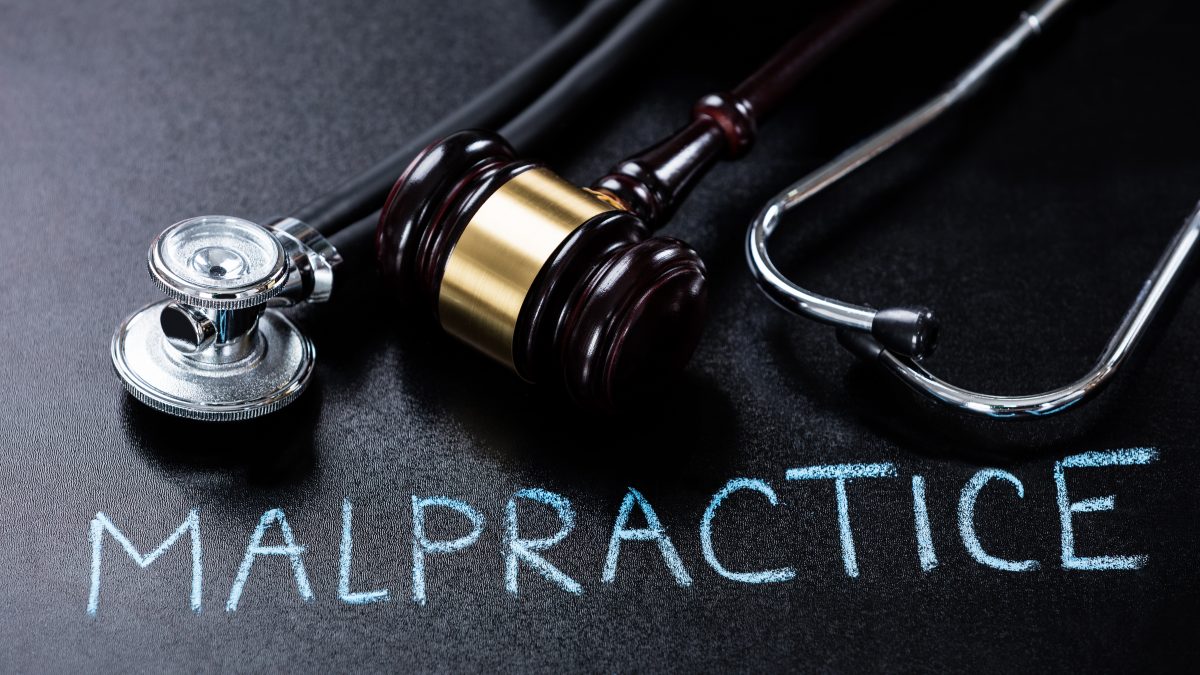Medical Malpractice Cases that Still Happen Today
We have all heard horror stories about medical mistakes….instruments left inside patients after surgery…erroneous amputations…fatal medication mix-ups…misinterpreted lab results…infections due to poor hygiene protocols…and many more. These tragic incidents occur far more often than most people realize. Each year in the United States, between 250,000 – 400,000 people die and millions more suffer serious adverse effects as a result of preventable mistakes made by doctors and other health care providers. Here is an overview of the most common medical malpractice cases.
What is Medical Malpractice?
Medical malpractice is when a patient suffers harm because of professional negligence on the part of a doctor or other health care provider. These can happen in either a hospital, primary care physician or nursing home setting.
To prevail in a medical malpractice lawsuit, the plaintiff has to prove the doctor or health care provider caused injury or death by failing to meet the applicable standard of care.
In a malpractice claim, the actions of the doctor or health care provider are compared to what doctors and/or health care providers would do when exercising ordinary reasonable care under the circumstances.
The standard of care is established by expert testimony.
What Is A “Never Event” in Medical Malpractice Cases?
As the name implies, the term “never event” refers to a mistake that should never happen in a health care setting under any circumstances. Most of these preventable incidents are the result of medical negligence, such as performing surgery on the wrong site, using the wrong blood type for a transfusion or failing to check for drug allergies or adverse interactions before prescribing medication.
To motivate hospitals to improve patient safety protocols, Medicare and some health insurance companies refuse to reimburse providers for treating victims of certain never events. In those instances, the hospital must assume these expenses without passing them on to the patient.
Misdiagnosis: The Most Common Cause of Medical Malpractice Lawsuits
Medical malpractice cases involving misdiagnosis may also include delayed diagnosis or failure to diagnose a serious condition. Because a disease such as cancer is most treatable when caught in its early stages, failing to do so can cause a patient to suffer serious harm. When a physician makes an incorrect diagnosis or fails to detect the condition entirely, the patient loses the opportunity for surgery, chemotherapy or other potentially life-saving treatment options. In many cases, by the time the disease is discovered, it may have progressed to the point of incapacitation or death.
Birth injuries that Result in Medical Malpractice Cases
Birth injuries may result from actions by doctors or other medical professionals during pregnancy, labor and/or delivery. Newborns can also suffer harm because certain actions are not taken, such as failing to identify and monitor a high-risk mother or neglecting to perform a C-section when a newborn or mother is in distress. Additionally, many birth injuries occur because a baby is deprived of oxygen during labor or delivery.
Cerebral Palsy
Cerebral palsy, or CP, is one of the most common birth injuries, usually caused by oxygen deprivation during labor or delivery. The name is actually an umbrella term for a group of disorders relating to movement, balance and muscle tone, and, in some cases, cognitive impairment.
In addition, Cerebral Palsy does not affect everyone in the same way. Some children are mildly affected, while others require lifelong care due to severe physical and cognitive disabilities.
Brain Damage Other Than Cerebral Palsy
Newborns can also be born with other types of brain damage. However, like Cerebral Palsy, this damage usually occurs when a newborn is deprived of oxygen. Brain damage can also occur when a doctor uses forceps or suction incorrectly during delivery.
Erb’s Palsy (also called shoulder dystocia)
This common birth injury involves damage to the delicate part of a newborn’s shoulder, or brachial plexus. It typically occurs when a doctor uses forceps improperly or otherwise applies excessive force during delivery.
Facial nerve damage
Facial nerve damage, also referred to as palsy, refers to a condition where an infant to lose control of voluntary muscle movement in the facial (7th cranial) nerve. This is usually caused when a physician uses forceps or other tools incorrectly or otherwise puts unnecessary pressure on a newborn’s face immediately before or during birth.
Fractures
A newborn’s clavicle or collarbone may fracture during labor and/or delivery if the doctor has difficulty delivering the baby’s shoulder. These fractures also occur during breech deliveries, when the baby is turned “upside down” in the birth canal.
In addition, a baby’s skull may fracture if a physician uses too much force or pressure during delivery.
Cephalohematoma
This is a type of cerebral hemorrhage, another birth injury that is most often caused by the incorrect use of delivery assistance tools such as forceps.
What is the difference between a birth injury and a birth defect?
Birth defects are structural or functional abnormalities that usually occur while a baby is in the womb. These anomalies can result in physical disabilities, cognitive and developmental impairment and other health problems.
In contrast, birth injuries typically result when something goes wrong during labor and delivery. Examples are oxygen deprivation, improper fetal monitoring or incorrect use of forceps or other equipment.
Both birth defects and birth injuries can be caused by negligence.
Medication Errors: Another Leading Cause of Medical Malpractice Claims
Medication errors cause at least one death every day and injure roughly 1.3 million people a year in the United States, according to the World Health Organization.
These kinds of mistakes are behind many medical malpractice claims. There are various forms of medication errors. The wrong medication can be prescribed, or a physician may mistakenly prescribe a drug the patient is allergic to, causing a serious reaction.
The most common medication errors involve dosage; prescribing or administering too much or not enough of a drug. Sometimes, the doctor prescribes the correct dosage, but the pharmacist fills the prescription incorrectly. In a hospital setting, an overworked nurse may give the patient the wrong dosage. Equipment that automatically administers drugs may also malfunction, resulting in a patient receiving an overdose or too little of a necessary medication.
Surgical Errors
Surgical mistakes are another leading cause of medical malpractice lawsuits. There are a variety of surgical errors that can occur, from operating on the wrong patient or body part to positioning the patient incorrectly for the procedure being performed. Infections can be caused by deficient sanitary protocol or by items that are inadvertently left inside a patient, such as gauze pads or small instruments. Inadequate post-operative care can also result in illness or infection.
Deadly Anesthesia Errors
Anesthesia, a necessary component of most surgeries and many diagnostic procedures, provides little to no margin of error. Even a small mistake by an anesthesiologist or nurse anesthetist can result in permanent injury, brain damage or death.
Prior to surgery, it is important that the anesthesiologist thoroughly review the patient’s medical history and ascertain that the pre-operative instructions, such as refraining from food and liquid after a certain time) were followed. A failure to do this can have deadly consequences.
In addition, a nurse or doctor may make a serious mistake during surgery, such as administering too much anesthesia, failing to monitor vital signs or incorrectly intubating the patient.
Anesthesia awareness unintended intraoperative awareness.
Healthcare-Acquired Infections
Sometimes referred to as “hospital-acquired infections” or “HAIs,” these infections occur in one out of 31 hospital patients on any given day, according to the Centers for Disease Control and Prevention (CDC). Many infections are prone to rapid spreading, especially in patients with weakened immune systems due to age or other conditions. In some cases, infections that go unnoticed or do not respond to antibiotics can lead to death.
Common HAIs include bloodstream infections from improperly placed IVs, urinary tract infections caused by erroneous use of catheters, infections at surgical sites and pneumonia resulting from faulty ventilator protocols.
Can I Sue a Healthcare Professional Who Errs While Providing Care for COVID-19?
It depends on the circumstances. In 2020, Congress passed the Coronavirus Aid, Relief, and Economic Security (CARES) Act. This law protects volunteer healthcare workers from medical malpractice lawsuits and limits liability for professional healthcare workers when providing care to COVID-19 patients.
The law limits liability for health care professionals and volunteers under federal or state law for any harm due to an act (or failure to act) under the following conditions:
- The person is providing care or services as a volunteer
- The services provided are within and do not exceed the scope of the professional’s license or certification under state law
- The services were related to the diagnosis, prevention, or treatment of COVID-19, or the assessment or care of an actual or suspected case of COVID-19
- The care provider was acting in good faith
However, these liability protections do not apply to willful or criminal misconduct, gross negligence, reckless misconduct, a conscious and flagrant indifference to the rights or safety of the individual harmed or providers who were under the influence of alcohol or an intoxicating drug when the harmful action (or inaction) occurred.
Additionally, some states have passed legislation or enacted executive orders granting COVID-19 healthcare providers immunity from civil liability for any injuries or harm resulting from actions taken in response to the coronavirus pandemic. Nevertheless, the federal CARES Act preempts state laws that provide greater liability protections.
Let Our Experienced Medical Malpractice Lawyers Start Your Case Today
If you or a loved one has suffered harm as the result of medical malpractice, we can help. Our knowledgeable legal team knows what it takes to hold the responsible parties accountable and win the compensation you and your family deserve. There are strict filing deadlines for medical malpractice cases, so it’s important to contact us immediately.
Medical malpractice law is complicated, but finding the right medical malpractice lawyer is simple.
Don’t let the legal clock run out. Fill out the brief form below or call 1-800-CALL-SAM today for a free, no-obligation remote consultation from the comfort and safety of your home.
HAVE YOU BEEN INJURED?
Get The Bernstein Advantage® today!
Free. Simple. Quick.


